News
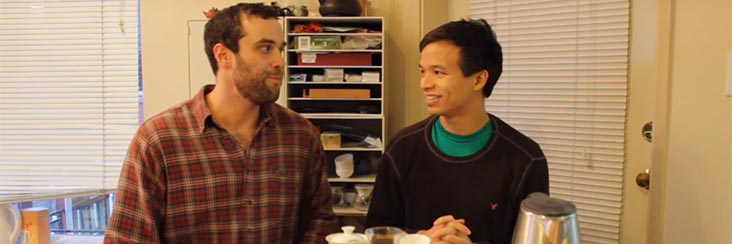
Eco-Cha featured on TeaDB
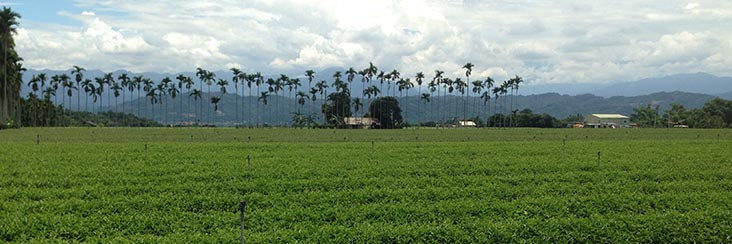
Winter Tea Shopping - A Sweet Surprise
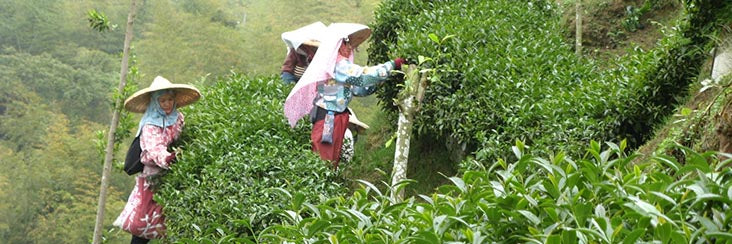
Tea Story #2: Shan Lin Xi High Mountain Black Tea, Winter 2012
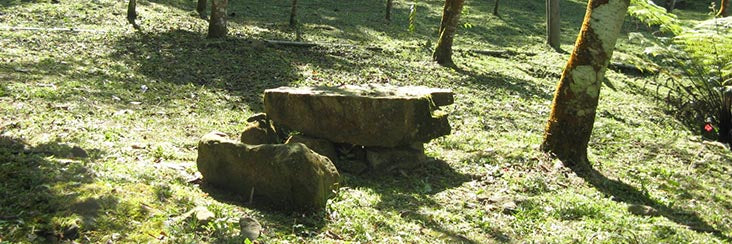
Winter Tea Shopping – Sneak Preview
We celebrated the conclusion of the Nantou County Global Tea Expo quietly, as the organizer Tony Lin and his wife Lisa were quite relieved to finally relax in their home after the three-week-long event. After staying the night in their home, I visited a few friends in Lu Gu - the home of Dong Ding Oolong Tea, to see how the winter harvest was going. A cold spell early in the growing season slowed the winter flush which has resulted in a repeat of last year's record low winter yield.
The first farmer I dropped in on had already completed his harvest and was roasting his first batch of tea in preparation for the Lu Gu Farmers' Association winter competition. It was a pleasure to taste the first brew of freshly harvested winter leaves that were still in the process of being roasted. The award winning tea maker deemed that they were just about done and had less than an hour left of their long slow roasting process. Mr. Chen is Tony’s cousin and was the first tea farmer I met 20 years ago.
Mr. Chen making New Year's offering in his "Tea Brewing Park" in Xi Tou, Lu Gu Township.



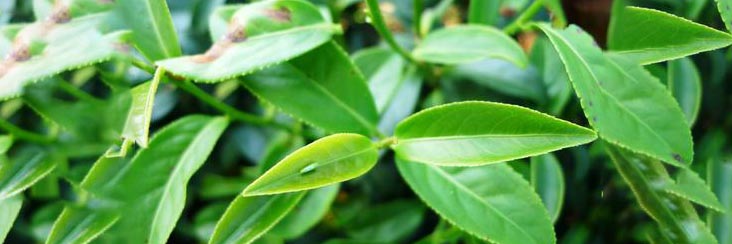
Tea Story #1: Shan Lin Xi High Mountain Concubine Oolong Tea, Winter 2011
An elusive type of tea that varies with each batch made, from season to season – depending on the presence of a small insect. Concubine Oolong is the result of the leaves being bitten by a tiny fly during growing season. This causes a kind of "scarring" of the leaf which results in partial oxidation while the leaf is still growing. It also instigates an immune system response in the plant, resulting in a unique flavor. Normally, this bug is deterred by the regulated use of a water soluble pesticide sprayed on the plants early in the growing season. More and more, farmers are allowing their plants to go unsprayed at least one season in the year. Typically this is done in summer, the most prolific season for the insect that is responsible for the production of Concubine tea.
Produced in Northern Taiwan, a more common name for "bug bitten" tea is Oriental Beauty (Dong Fang Mei Ren - also called Bai Hao Oolong or Peng Feng Cha). Oriental Beauty is made from a slightly different green heart oolong varietal than that which is cultivated for high mountain tea in Central Taiwan. Concubine also differs from Oriental Beauty in that the Concubine leaves are tightly rolled in the manner of a modern Taiwan Oolong, rather than the traditional mainland China method of curled, open leaves. Tightly rolling the leaves is a Taiwanese innovation that protects and preserves the tea.
Our tea mentors happened upon this batch of tea while tasting a farmer friend’s Shan Lin Xi high mountain spring tea. The farmer mentioned in passing that he had a batch of tea from the winter prior’s harvest that had been affected by this bug due to an oversight in not spraying a small section of his self-run farm. It is very rare to find winter tea produced in this fashion from a high elevation farm.
It is a relatively small farm, managed by a husband and wife team who transformed their plot of virgin high mountain bamboo forest into a tea garden just ten years ago. Currently in its prime age, the tea garden is at about 1,600 meters elevation in one of the largest and most popular regions of Taiwan for producing top quality high mountain oolong tea. This couple manages their farm by themselves, using only natural fertilizers, zero weed killers, and only a minimal amount of water soluble pesticides early in the growing season. They produce approximately 300 pounds of tea from a typical day's spring harvest, compared to 1000 pounds a day from larger productions in the area.

Final day at the Nantou Global Tea Expo, 2013.
The last Sunday in October was the final day of the Nantou County Global Tea Expo. So I made my 4th visit to the event to make a last round of meeting and talking with tea farmers as they wrapped the three week stint of vending their produce, and also to attend the fashion show featuring modern style Chinese women's wear.
I sat in a proper theater that is a remnant of early KMT or perhaps even Japanese Central Government (pre WWII) in Nantou County, and watched women of stature and grace model contemporary renditions of traditional Chinese fashion. The style was naturally elegant in a sort of traditionally dignified way. The tasteful, non-commercial production of the show was also much appreciated. There was an upbeat Asian techno-jazz track that was played intermittently with live performance on the Gu-qin (a piano-type instrument where the strings are plucked rather than struck). It really was a fine fusion of traditional and modern culture.
After the show, I headed to the ice cream vendor who was making fresh ice cream on site of only one flavor per day - that of a locally produced tea. I got to taste Tie Guan Yin Oolong on my first day, and Dong Ding Oolong flavor on my second and last chance to sample the handmade tea-flavored ice cream - made fresh daily throughout the event. It was delicious!
With my cone of Dong Ding Oolong ice cream in hand, I made my way to the long, cavernous, red arched-roof tents filled with hundreds of tea vendors serving their own produce to the public for free. I finally sat down at the table of a farmer who I’d met a few times before and who had told me of his recent project of leasing a tea garden on Dong Ding Mountain and cultivating it organically. Although it has already been tested and certified organic, it is still in its transitional phase in that the yield of leaves is very low as the plants adjust to natural growing conditions. This winter harvest produced a mere 50 jing (approx. 60 lbs) of tea. The type of tea he is making is an interesting innovation however - in a retro sort of way. He is harvesting leaves that have been more or less affected by the insect that is responsible for the creation of Oriental Beauty and Concubine Oolongs. He processes them more in the fashion of Oriental Beauty - drying them into loosely curled leaves that have been 60-70% oxidized and then roasts them at low temperatures in order to completely deplete them of moisture content for stability and preservation purposes.
I sat at a few other tea vendors' tables as the energy of the expo wound down and the farmers began packing up their goods to take home after three full weeks of serving the public at their tea stations. One was a well established tea merchant with 3 stores in Central Taiwan. The guy who served me tea was about my age and has inherited the business from his father. They specialized in traditional style teas such as Oriental Beauty, Tie Guan Yin (original style rather than the new trend of Green Guan Yin), Aged Oolongs, and Black Teas. I really appreciated their classy yet modest brand representation. I felt like I was talking with a true traditional tea merchant in the 21st Century. It was a very brief yet poignant meeting and I really look forward to visiting their home base in Nantou City some day in the near future.
I also met a farmer with a tea garden located in an area I did not know tea was grown - on the eastern slopes of He Huan Mountain, where I've ridden many times and knew there were no roads off of the main route that traverses the pass at about 3000m. The eastern side is gorgeous rugged terrain with patches of primary growth below the treeline and zero development other than a solitary hotel with stunning views of sunrise above a sea of clouds almost daily. I learned from this farmer, however, that there are foot paths from the main road, as well as monorail tracks run by power generators to cart the bushels of fresh tea leaves harvested by hand on land that is only accessible on foot. So these bushels of freshly picked leaves are collected at the roadside and carted off to a nearby factory for processing. This is a new frontier of high mountain tea cultivation that I have yet to explore, and in an area that is some of the most rugged and undeveloped high elevation terrain that I have seen in my 20 years of mountain exploration.
The main purpose of my final visit, however, was to continue into the foothills of Deer Valley to celebrate the conclusion of a job well done by the organizer of the Expo - Tony Lin. It was a celebration of the simplest kind. Tony, his wife Lisa, the new principal of the local Junior High School - Patricia, who acted as MC of various events at the Expo, and I all headed for Tony and Lisa's home in Lu Gu from the Expo. We arrived after dinnertime, but none of us had eaten, so Lisa got creative in an impromptu way to feed us from her kitchen that had been neglected during their busy expo time. Soon after, we were joined by a mutual tea friend who I’ve known for a long time and have learned a lot from in the last several years in relation to Taiwan tea, as well as fine Scottish Whisky - which he provided for the occasion.
Video of the '1000 People Brew Tea Event' at the Nantou Global Tea Expo, 2013.
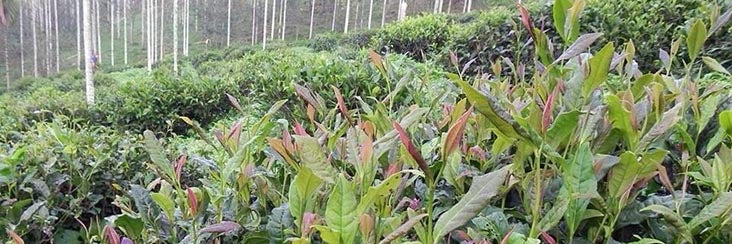
Wild Indigenous Taiwan Mountain Tea
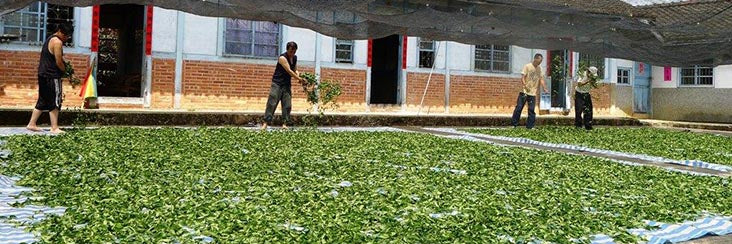
What is Artisan About Artisan Tea
This post was originally shared with our friends at TChing, they have a great tea blog, check them out.
As people interested in premium teas, we have all been exposed to the term “artisan” being used in many contexts. This begs the question as to what actually defines a tea as being artisan. This post is meant to begin a conversation, with follow ups on how this issue is being addressed within the industry here in Taiwan.
Reflecting on this question, I was inspired to call on a friend with passionate conviction on the topic. I first visited Mr. Lin in his tea factory and home - a traditional 3-sided house on Dong Ding Mountain - some 20 years ago. One of three brothers who inherited the tea farm, he became the representative of their tradition by moving off the mountain and raising his family in the city. He has been a professional tea judge at the Lu Gu Farmers’ Association Tea Competition for many years, and has been continually involved in the education and representation of tea culture in Taiwan. He is passionate about his inheritance of the Dong Ding Oolong tradition, as well as highly informed of the trends in Taiwan’s tea industry - both past and present.
In two words, his essential definition of artisan tea is all about “handmade” and “oxidation” - which in this case are one in the same process. The leaves need to be shuffled by hand repeatedly over several hours throughout the oxidation process. These terms immediately led into other factors such as how much tea can be harvested and processed at once using traditional methods, and who is employing these deep and complex procedures, and the discussion ensued. Of course, this is the response from a Traditional Dong Ding Oolong Tea artisan - so we are referring here only to what defines “Artisan Oolong Tea”. Our conversation touched on many factors, but his answer centered on processing methods - which prompted the recollection of my early visits to tea country.

At that time, all I saw in the factories I visited were the traditional woven bamboo trays that were filled by hand with freshly wilted leaves exuding a heady yet truly refreshing aroma in racks about 200cm high mounted on wheels. A small forest of racks filled small spaces in which they were rearranged systematically amidst frequent shuffling of the leaves in their trays by hand, combined with tumble rolling in a large woven bamboo horizontal cylinder.. The timing of the shuffling by hand and tumbling was largely determined by examining (touching, smelling, and seeing) the state of the leaves and how far along in the wilting and oxidizing process they were.
Some factories had two or three tumbling cylinders accommodating relatively large harvests - which then were maybe 600 台斤 茶青 or nearly 700 pounds of freshly harvested leaf - which produces about 175 pounds of tea. That was a large harvest on the farms I was familiar with at that time, but that’s only because my first contact was with Traditional Dong Ding Oolong artisans whose tea factories were typically built into their homes.
This is the context and small-scale production level that my friend referred to in response to my question. It is his firm conviction that artisan oolong tea is comprised of hands-on contact with the leaves as they are processed. The frequent shuffling of the leaves by hand is an essential aspect of proper oxidation. According to him, without this process, it is not artisan tea. Beyond oxidation, there are other steps in the processing of oolong that have been mechanized or simply eliminated - such as rolling methods and post production roasting - that are essential in the making of Traditional Dong Ding Oolong.
Hands-on contact with the leaves is far more than a labor intensive processing method. It is based on an experienced understanding of the overall conditions that each harvest entails - beginning with the growing season, the weather at harvest time, and the state of the leaves as they are processed.
This understanding of the leaves prompts the artisan to adjust the processing methods according to the current conditions. The freshly picked leaves are also brewed and tasted at different stages in the processing which determines the timing and extent of each step.
Traditional tea making is an integrated process determined by expertise that is gained over years and generations of careful observation and trial and error learning. This is why it cannot be done by standardized procedures employed by hired labor. It requires a living apprenticeship that transmits understanding and skill.
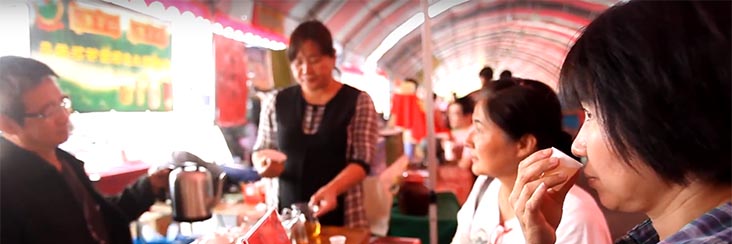
Nantou County Tea Expo Video Walkthrough #2
Take a walk with us through the Nantou County Global Tea Expo. This is Taiwan tea culture coming together for 3 weeks of sharing.
Share and subscribe if you enjoy these videos and would like more Taiwan tea culture on video.
Enjoy!
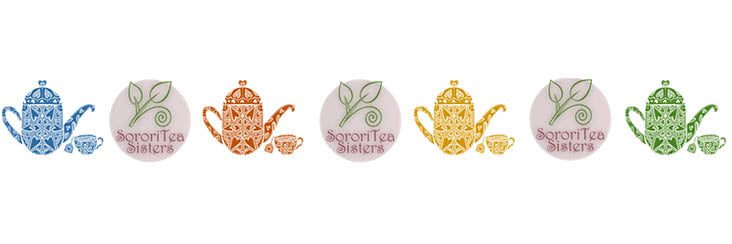
Review: Dong Ding Oolong Tea Reviewed by The SororiTea Sisters







